As the trend for tiny homes continues to grow, so does the interest in creating a tiny homes gardens. Gardening on a smaller scale requires creativity and smart solutions to make the most of limited space.
Whether you want to grow your own food or create a calming retreat, a garden can transform your tiny home into a lively and vibrant oasis.
Contents
What is a Tiny Homes Garden?
A tiny homes garden is a thoughtfully designed space that maximizes the limited area available in and around a tiny home.
Unlike traditional gardens, tiny homes gardens often make use of vertical spaces, compact plants, and innovative setups to cultivate a variety of plants in a constrained environment.
These gardens can range in style, from lush tropical plants to serene Zen gardens, offering versatility and personalization for tiny homeowners.
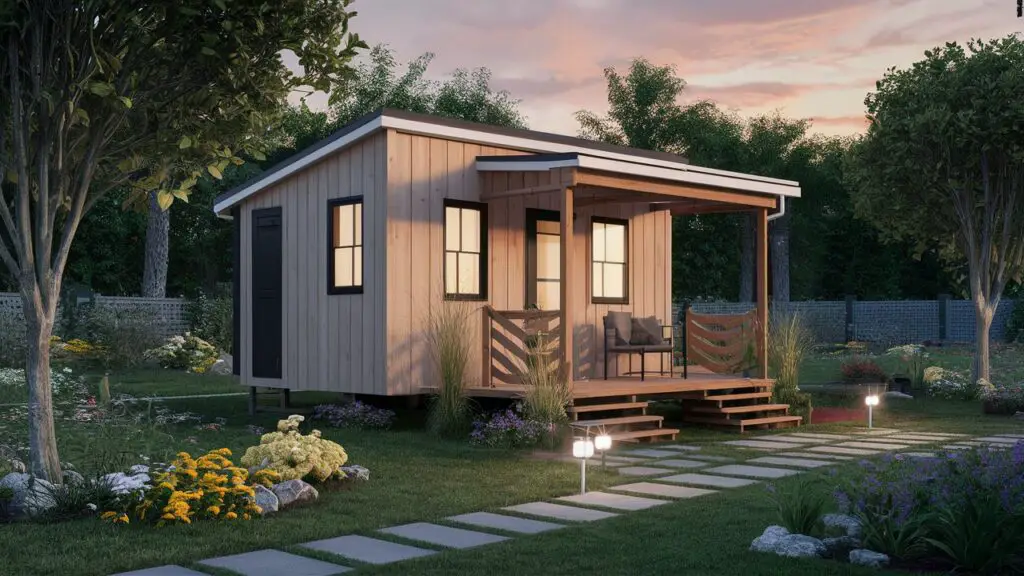
Designing Your Tiny Homes Garden
Vertical Gardening: Maximizing Limited Space
Vertical gardening is an ideal solution for tiny homes where horizontal space is limited. It involves growing plants upwards on walls or trellises, rather than spreading them across the ground.
This approach not only saves space but also adds an aesthetic element to your garden.
By using vertical gardening, you can grow herbs, vegetables, and even flowers on various surfaces around your tiny home.
Popular choices for vertical gardening include climbers, vining plants, and wall-mounted planters.
Multi-Level Garden: Layered Approach
Creating a multi-level garden allows you to use different levels of height to grow a variety of plants simultaneously.
This layered approach optimizes every inch of available space and can be achieved through tiered planters, shelves, and stacks.
For example, planting taller plants in the background and shorter ones in the foreground can create an interesting visual dynamic.
This method makes it possible to grow a range of plants in a compact area, from leafy greens to aromatic herbs.
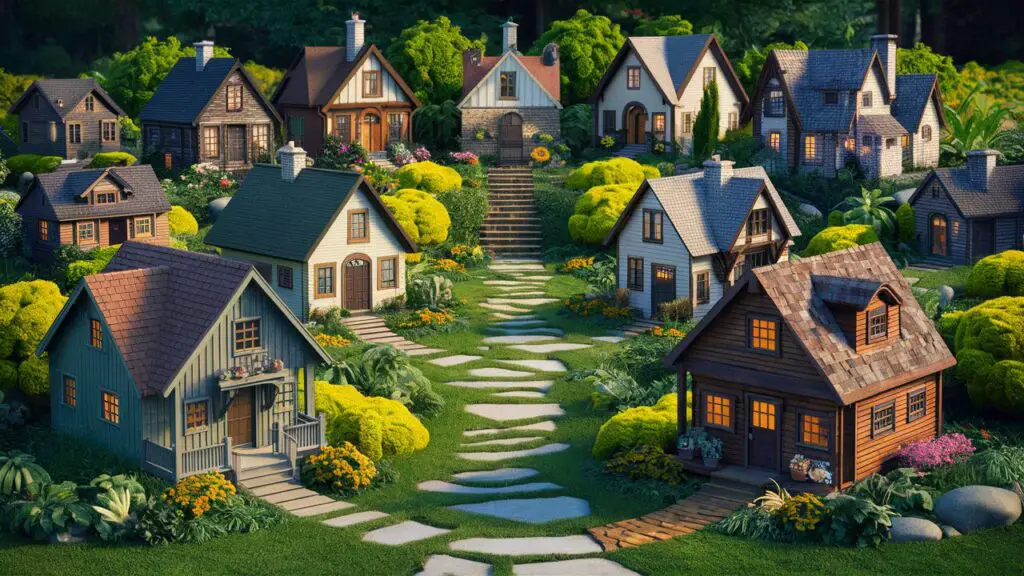
Rooftop Garden: Utilizing Roof Space
A rooftop garden utilizes the often-overlooked roof area, transforming it into a green sanctuary. This approach is especially beneficial for tiny homes with limited ground space.
Rooftop gardens offer various advantages, including improved insulation, reduced heat absorption, and additional gardening space.
Before starting a rooftop garden, it’s essential to ensure the roof can support the added weight of soil, plants, and containers.
Waterproofing and drainage are also critical considerations to prevent leaks and water damage.
Raised Beds: Elevated Gardening
Raised beds are elevated garden structures that sit above the ground, providing an excellent solution for tiny homes gardens.
They are beneficial for several reasons: they improve soil drainage, reduce soil compaction, and make gardening more accessible.
Raised beds can be constructed from various materials, such as wood, stone, or recycled materials, and can be customized to fit the available space.
These beds are perfect for growing vegetables, herbs, and flowers, offering better soil control and easier maintenance.
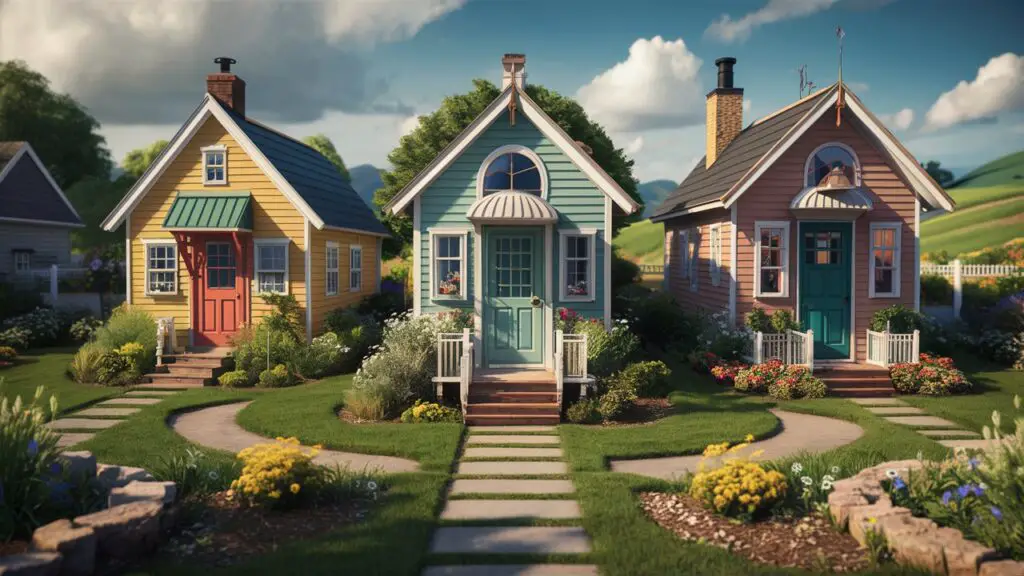
Hanging Baskets: Floral and Greenery Displays
Hanging baskets are a wonderful way to add greenery and flowers to your tiny homes garden without taking up valuable floor space.
They can be hung from ceilings, walls, or railings and are ideal for growing cascading plants like petunias, ferns, and ivy.
Hanging baskets come in various sizes and styles, allowing you to select ones that complement your garden’s overall design.
To get the best results, choose lightweight, breathable materials and ensure proper watering and drainage.
Miniature Greenhouse: Year-Round Gardening
A miniature greenhouse allows you to cultivate plants throughout the year, regardless of the season.
These small structures provide a controlled environment, protecting plants from extreme weather conditions and pests.
Miniature greenhouses come in various designs, from tabletop models to freestanding units, making them suitable for different spaces.
They are perfect for growing seedlings, tropical plants, and delicate herbs that require specific care.
Regular maintenance, such as ventilation and humidity control, is essential to ensure plant health.
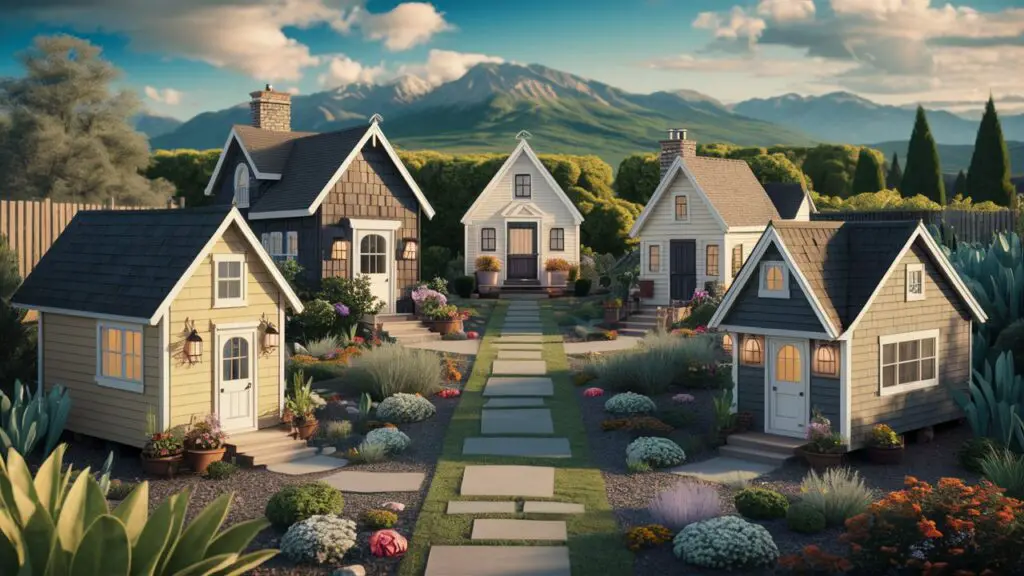
Bonsai Trees: Artistic and Compact
Bonsai trees are a perfect addition to any tiny homes garden, combining beauty and compactness.
These miniature trees offer a fascinating cultivating experience, requiring patience and skill to prune and shape them into intricate forms.
Bonsai trees add a touch of elegance and art to your garden, making them a focal point. They can be grown both indoors and outdoors, depending on the type.
Basic care includes regular watering, occasional feeding, and proper pruning to maintain their miniature size and shape.
Container Gardening: Versatile and Portable
Container gardening allows you to grow plants in various containers, making it perfect for small space gardening.
This method offers flexibility, as containers can be moved around to optimize sunlight and space.
You can use pots, tubs, barrels, and even recycled materials as containers. When selecting containers, ensure they have proper drainage holes to prevent waterlogging.
Container gardening is suitable for a wide range of plants, including vegetables, flowers, and tropical plants.
It also enables you to create themed gardens, such as a succulent garden or a cottage garden.
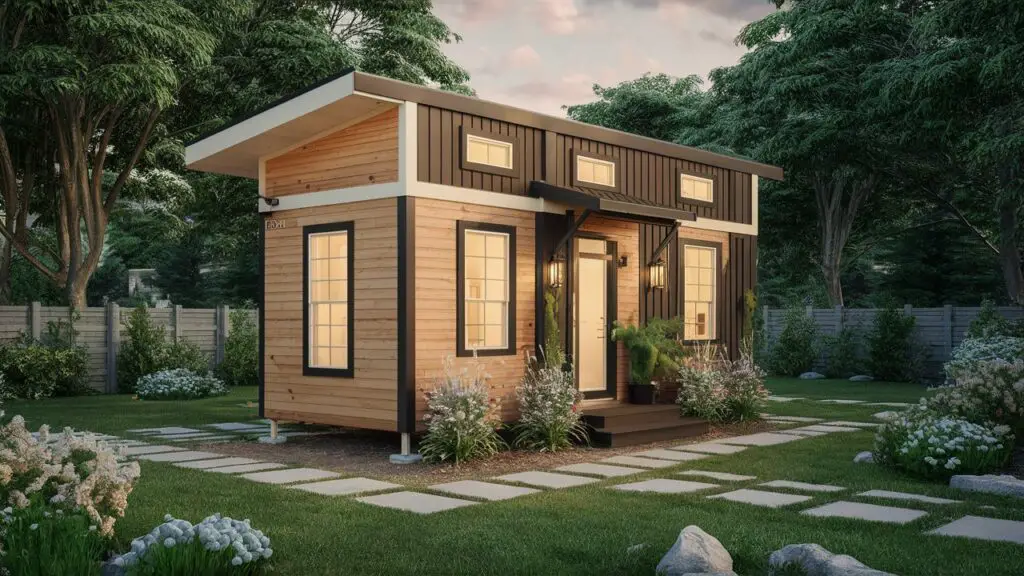
Principles of Small Space Gardening
Sustainable Practices: Eco-Friendly Approaches
Implementing sustainable practices in your tiny homes garden is crucial for environmental conservation. This includes adopting methods like water conservation and rainwater harvesting to minimize water usage.
Collecting rainwater in barrels and using it to water plants reduces dependence on municipal water supplies.
Additionally, employing organic gardening techniques, such as avoiding chemical pesticides and fertilizers, helps protect the ecosystem and promote biodiverse gardens.
Soil Care: Ensuring Healthy Growth
Healthy soil is the foundation of a thriving garden. Proper soil care involves regular soil testing, amending with compost, and ensuring good drainage.
Adding organic matter like compost improves soil structure, fertility, and moisture retention.
Mulching with organic materials such as straw or leaves helps maintain soil moisture, suppress weeds, and regulate soil temperature.
Regularly rotating plants and practicing companion planting also contribute to soil health by preventing nutrient depletion and reducing pest issues.
Organic Gardening: Chemical-Free Solutions
Organic gardening emphasizes using natural methods to grow plants without synthetic chemicals. This approach promotes a healthy environment for both plants and gardeners.
Techniques include utilizing natural fertilizers like compost and manure, introducing beneficial insects for pest control, and using organic mulches to enrich the soil.
Organic gardening is particularly suitable for growing an edible garden, as it ensures that the produce is free from harmful chemicals.
Companion Planting: Strategic Plant Pairing
Companion planting involves strategically positioning plants together to enhance their growth and protect them from pests.
Certain plants have properties that benefit others when grown nearby.
For example, planting basil near tomatoes can repel pests and improve the flavor of the tomatoes.
Similarly, marigolds can deter nematodes when planted with vegetables.
This method creates a mutually beneficial garden environment, promoting healthier and more productive plants.
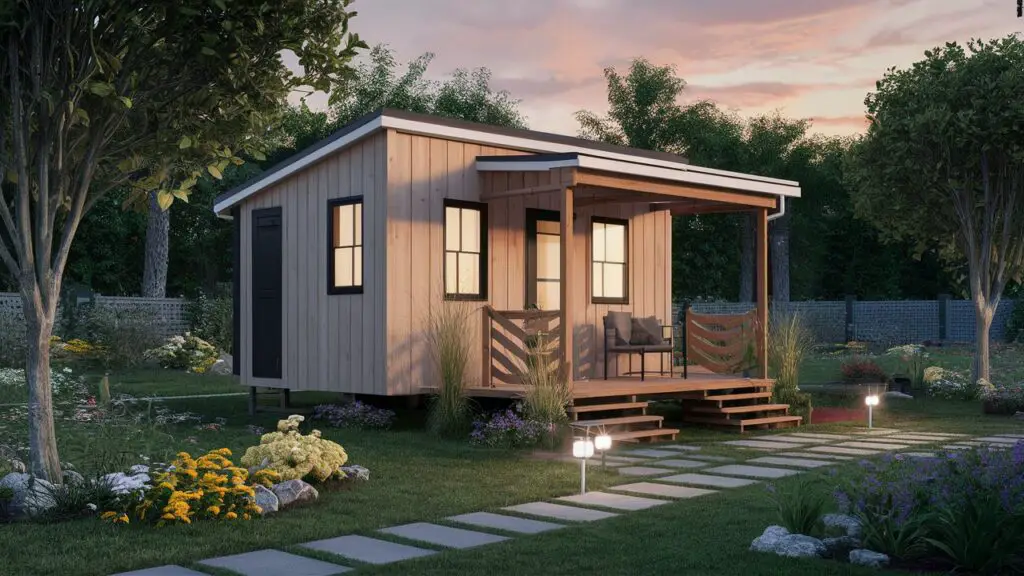
Creating an Edible Garden: Grow Your Own Food
Starting an edible garden in a tiny home allows you to grow fresh and nutritious produce. This can range from herbs and salads to vegetables and fruits.
Consider planting high-yield, space-efficient crops that provide regular harvests, such as lettuce, radishes, and dwarf fruit trees.
Raised beds and container gardening are excellent methods for creating an edible garden. Ensure proper spacing, sunlight, and care to optimize growth.
Utilizing organic gardening principles will ensure that your produce is safe and healthy.
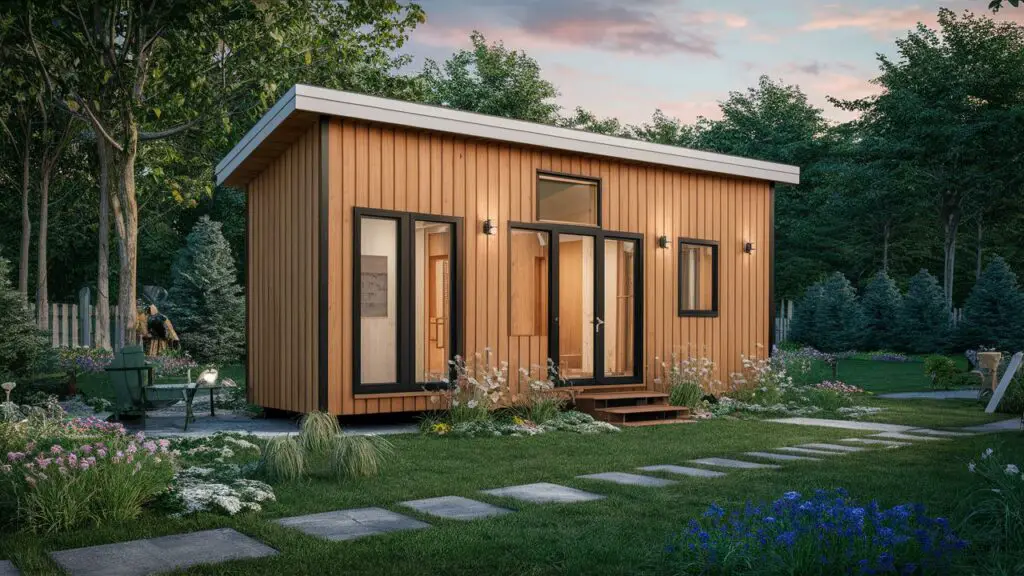
Adding Decorative Elements: Enhancing Aesthetics
Color Schemes, Textures, and Focal Points
Creating a visually appealing tiny homes garden enhances its charm and enjoyment. Choose color schemes that complement your home and garden design.
Incorporate different textures by mixing plants with varied leaf shapes, sizes, and surfaces.
Creating focal points, such as a striking plant arrangement or an artistic sculpture, draws attention and adds interest to the garden.
Balance is key, so avoid overcrowding the space with too many competing elements.
Zen Garden: Tranquil and Minimalistic
A Zen garden adds a sense of tranquility and minimalism to your tiny homes garden.
This type of garden features clean lines, simple designs, and a focus on natural elements like sand, rocks, and carefully selected plants.
Incorporating elements like a small water feature, raked gravel, and strategically placed stones can create a peaceful retreat within your tiny home space.
Bonsai trees, moss, and bamboo are common plants used in Zen gardens.
Artistic Sculptures and Cottage Garden Features
Introducing artistic sculptures can add personality and a unique touch to your garden. Sculptures can range from abstract art to whimsical figures, depending on your taste.
Cottage garden features, such as rustic paths, vintage containers, and blooming flowers, create a charming and inviting atmosphere.
These elements can be combined to reflect your personal style and enhance the overall aesthetic of your tiny homes garden.
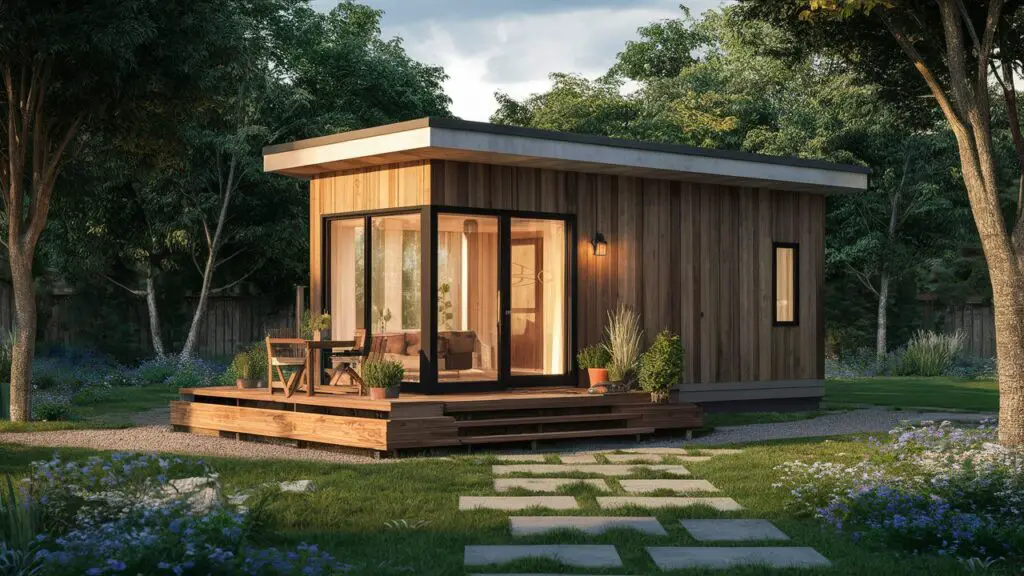
Plant Selection for Tiny Homes Gardens
Tropical Plants and Succulent Garden
Growing tropical plants in your tiny homes garden brings a lush, exotic feel to your space. These plants often thrive in warm, humid environments and can be grown indoors or in a miniature greenhouse.
A succulent garden is another great option, as succulents are low-maintenance and come in various shapes, sizes, and colors.
Succulents are drought-tolerant, making them ideal for small space gardening and sustainable practices.
Low-Maintenance Plants: Easy to Care For
Selecting low-maintenance plants ensures that your garden remains beautiful without requiring extensive upkeep.
Choices like succulents, cacti, dwarf shrubs, and perennial flowers are ideal for tiny homes gardens. These plants typically require less
watering and can thrive with minimal intervention.
Incorporating low-maintenance plants frees up time and reduces the stress associated with garden care, allowing you to enjoy your tiny homes garden without the hassle.
Pollinator-Friendly Garden and Privacy Plants
Creating a pollinator-friendly garden helps support local wildlife, such as bees, butterflies, and hummingbirds, which are essential for pollination.
Planting flowers like lavender, coneflower, and milkweed attracts these pollinators, aiding in the health and productivity of your garden.
Additionally, incorporating privacy plants like bamboo, tall grasses, or hedges can create a sense of seclusion and intimacy in your tiny home garden, while also providing a habitat for beneficial insects and birds.
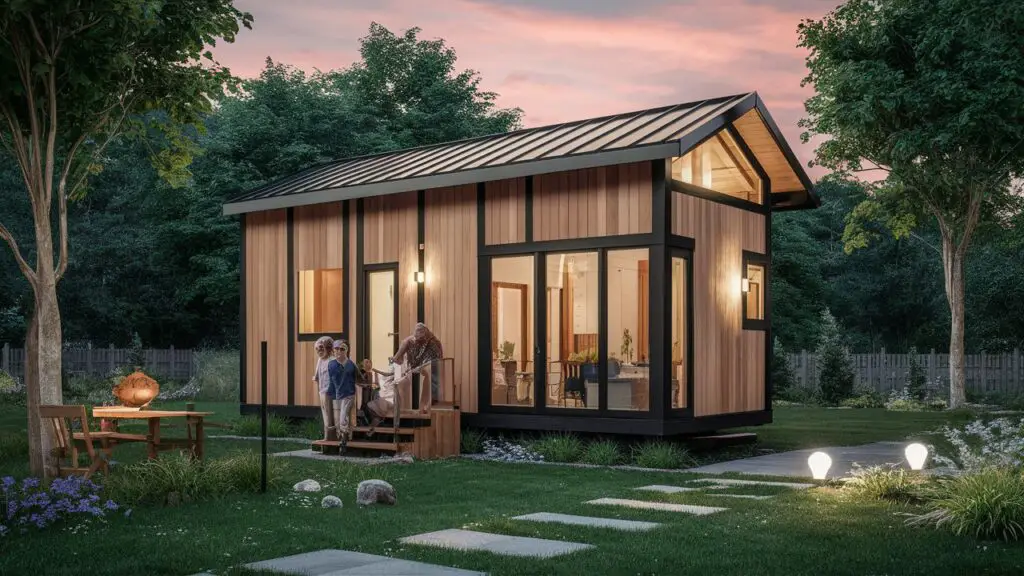
Using Recycled Materials: Eco-Conscious Gardening
Using recycled materials in your garden not only helps the environment but also adds a unique, creative touch to your space.
Materials like old tires, pallets, cans, and bottles can be repurposed into planters, trellises, and garden art. DIY projects using recycled materials are both cost-effective and environmentally friendly.
For example, a rainwater collection system can be constructed from recycled barrels, aiding in water conservation efforts and reducing your garden’s water footprint.
DIY Garden Projects: Personal Touches
Engaging in DIY garden projects allows you to personalize your garden and create unique features tailored to your tastes.
Some project ideas include building raised beds, crafting vertical gardens from pallets, or creating decorative stepping stones.
Additionally, constructing trellises, planters, and birdhouses from upcycled materials adds character to your garden.
These projects offer a chance to express creativity and make practical use of available resources.
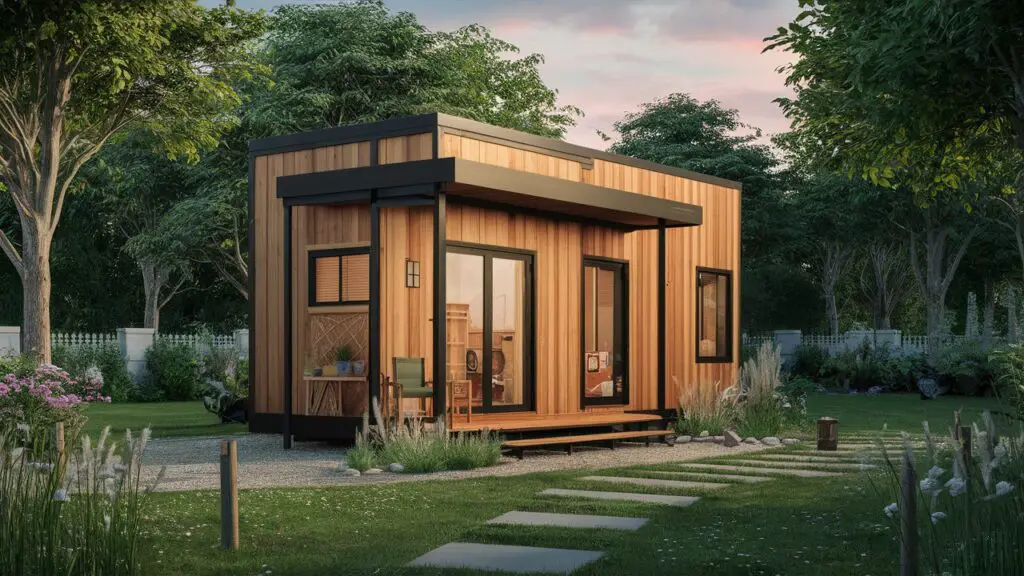
Seasonal Adjustments: Adapting to Changes
Gardening in a tiny home requires flexibility and planning for seasonal adjustments. Each season brings different challenges and opportunities for your garden.
During spring and summer, focus on planting, growth, and maintaining moisture levels. Fall is the time for harvesting and preparing plants for winter, including mulching and protecting delicate plants.
Winter gardening may involve using a miniature greenhouse or indoors container gardening to keep plants safe from the cold.
Adjusting your gardening practices seasonally ensures continued plant health and productivity.
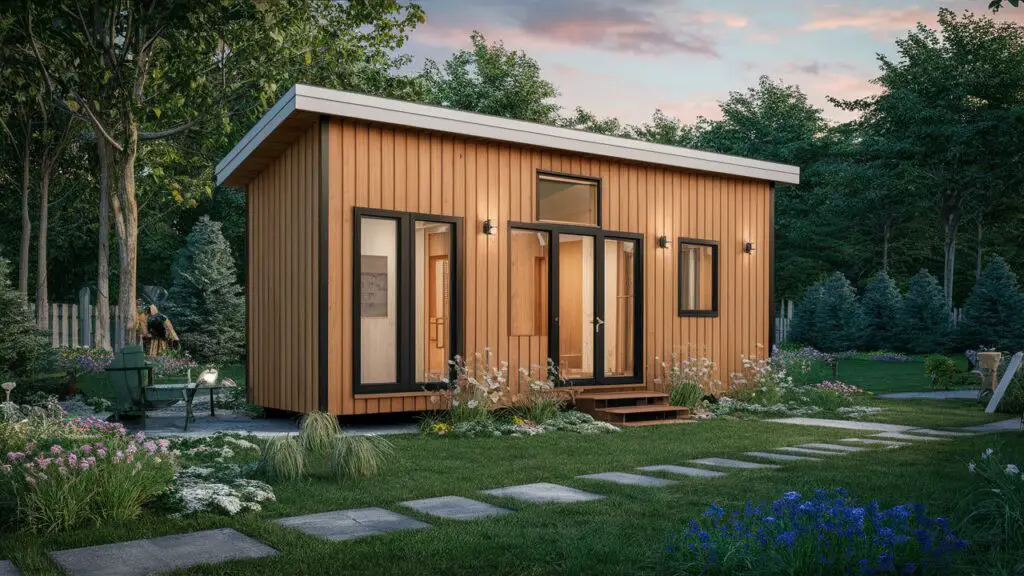
Conclusion
In conclusion, a tiny homes garden offers numerous benefits, from fresh produce and beautiful flowers to a peaceful retreat and eco-friendly practices.
By adopting methods like vertical gardening, container gardening, and using recycled materials, you can maximize your space and create a vibrant garden in any size home.
Sustainable practices, such as water conservation and organic gardening, further enhance the value of your garden, making it an environmentally responsible choice.
Whether you’re a gardening novice or an experienced green thumb, there’s no limit to the creativity and joy you can find in a tiny homes garden. Embrace the journey and transform your small space into a thriving green haven.

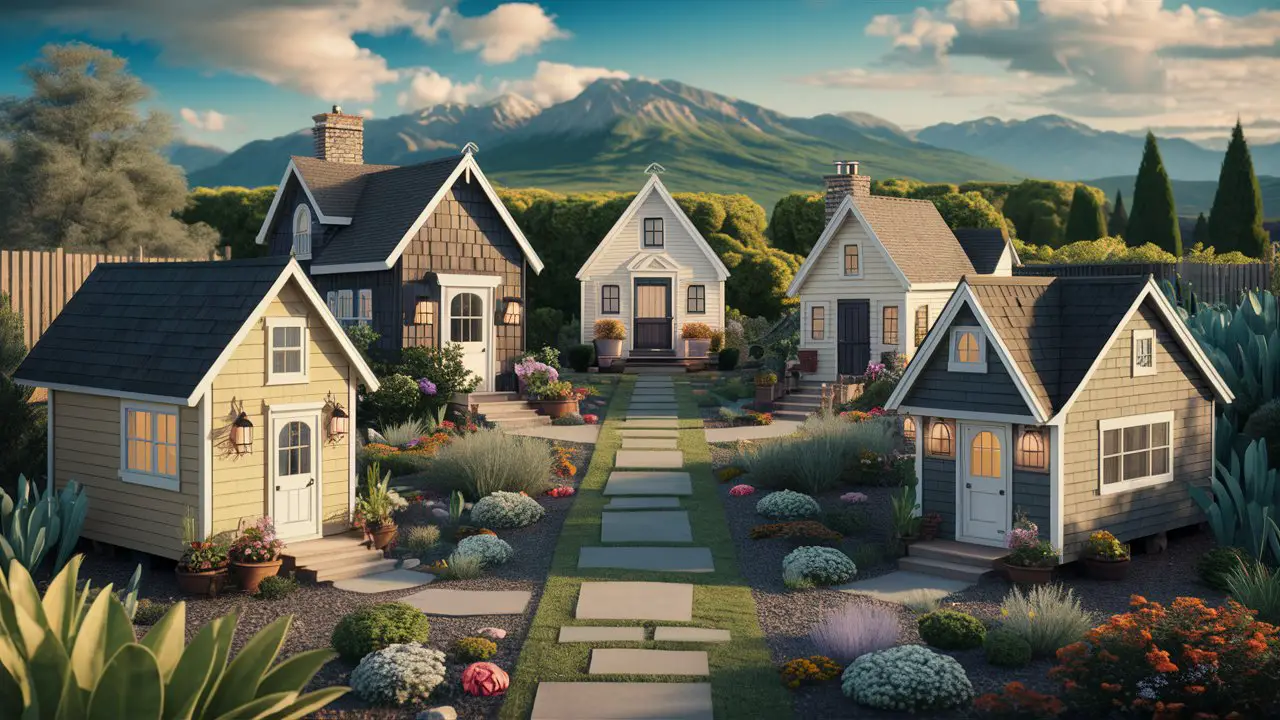
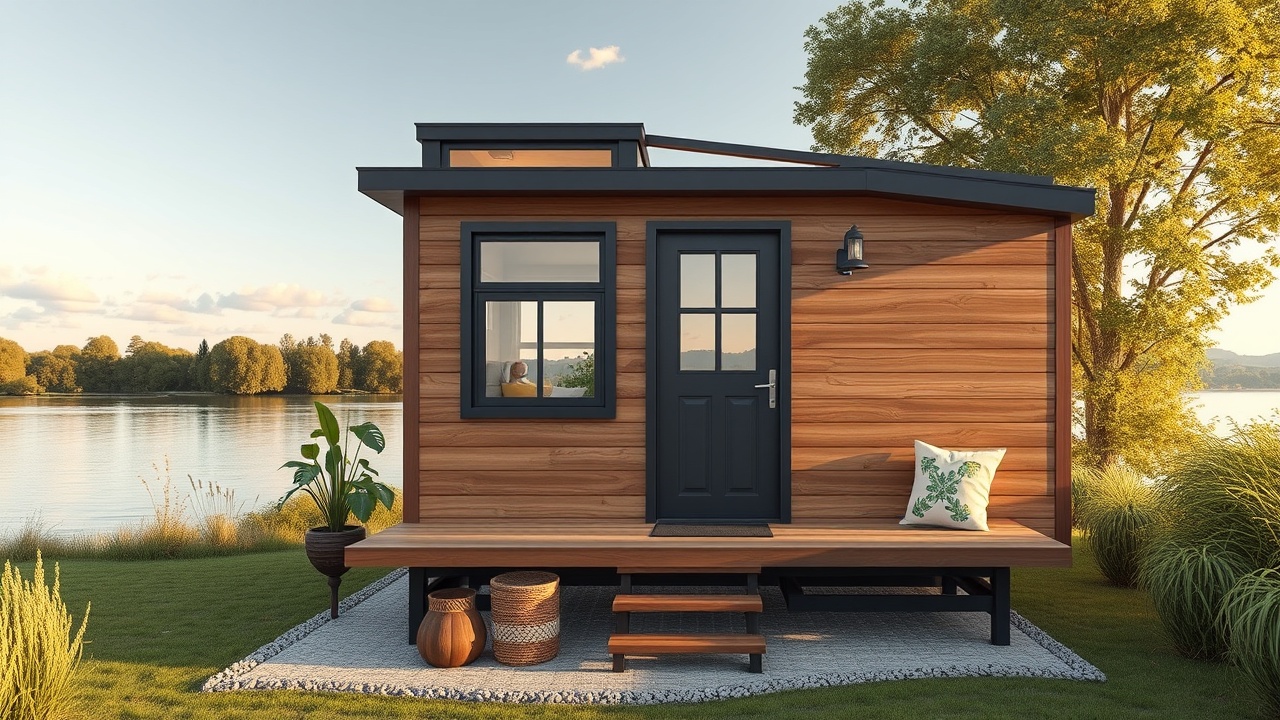
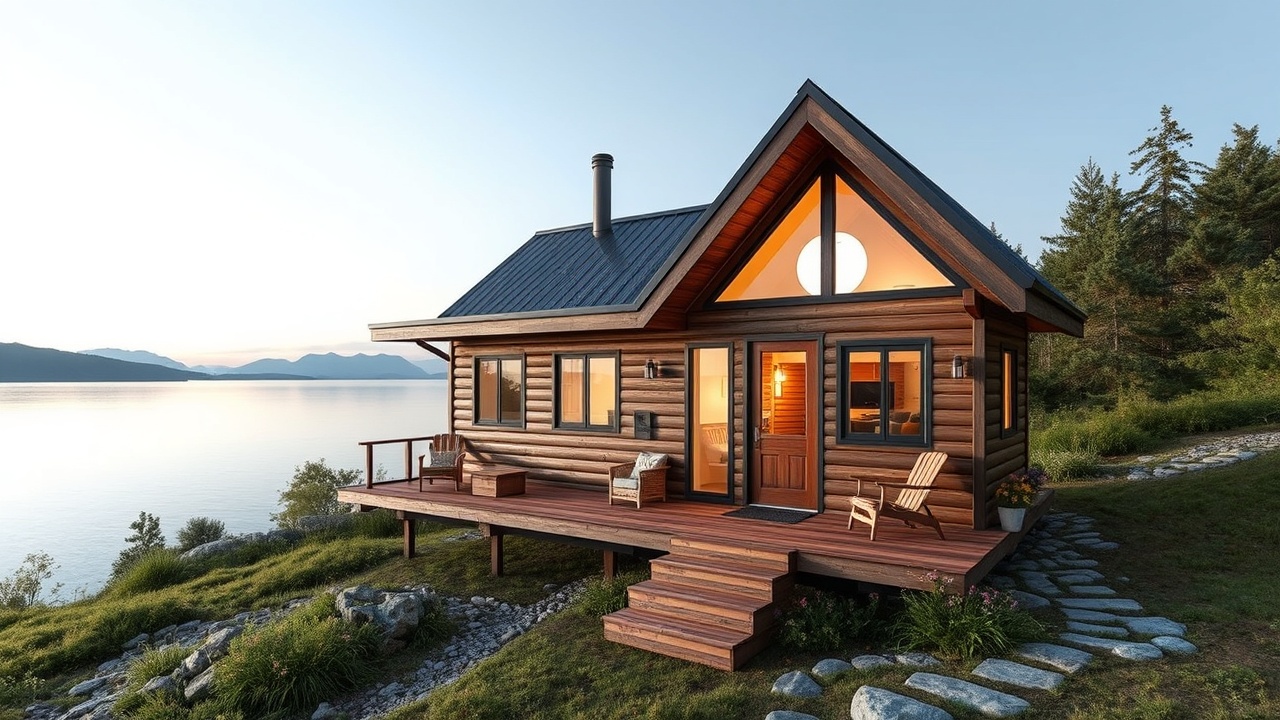
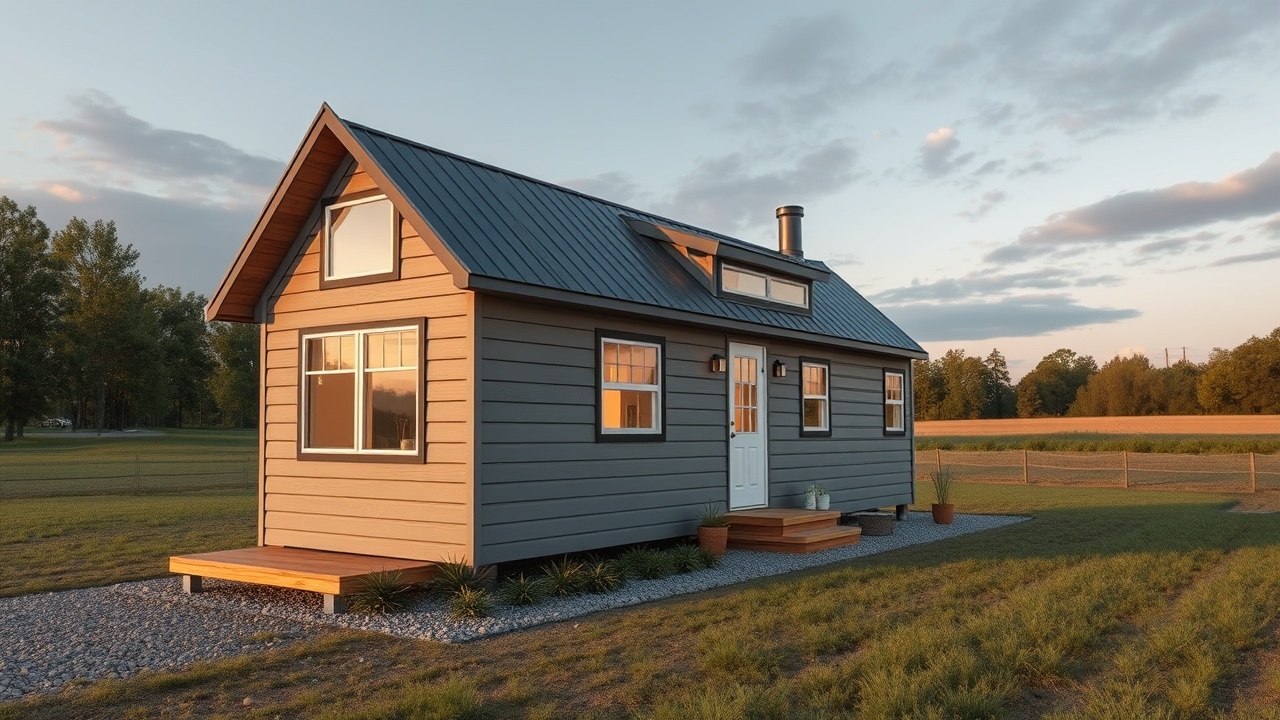
Leave a Reply